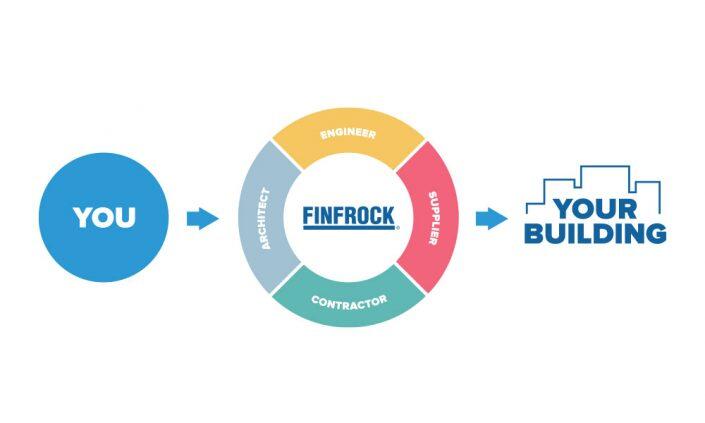There is no doubt that the pandemic is changing the way companies do business. In the real estate industry that means that owners and developers must also move into the new normal, post-pandemic while continuing to mitigate risk.
Traditional construction procurement typically involves multiple companies bidding on different aspects of a project with an owner or developer purchasing a series of events or portions of a project from multiple companies. Not only are these companies not economically motivated to work collaboratively, but to win the bid, these subcontractors also come in at their lowest cost, not the cost that’s in the best interest of the project. The result is hidden costs, often with no clear idea of what the investment will genuinely cost until it’s too late.
“New construction can be high risk under normal market conditions, but even more so in today’s post-pandemic environment,” said Bill Finfrock, president of FINFROCK, the only vertically integrated design-builder of its kind in the industry. “However, with the right partner, it can also offer high rewards.”
The design-build method of construction not only delivers maximum benefits to owners upfront, but the right design-build partner also is a trusted advisor, working for as the single source of responsibility and helping to maximize the return on investment while minimizing the effects of the top challenges that reduce return on investment.
“A trusted design-build partner makes sense for many reasons,” said Finfrock.
He should know. For 75 years, his private, independently owned, award-winning company has utilized proprietary technology to design and build structured parking, hotels, student housing, office buildings, multi-unit residential complexes and mixed-use facilities, lowering both cost and risk for owners.

According to Finfrock, here is why the right design-build partner can pay dividends:
Time: Time is money, and the time it takes to complete development projects dramatically affects IRR. The right design-build partner should deliver a completed project faster than a traditional construction method of design bid build. It’s not only more efficient for the builder to work off their plans, but the design-builder should be able to begin procurement, and even construction, early in the design process.
A vertically integrated design-builder can also conduct work in multiple phases of a project simultaneously. With multiple disciplines moving forward at the same time, schedules are significantly compressed.
Changing Market Conditions: “There is always risk of a recession effecting market conditions before completion, but now, unfortunately we can add, ‘will there be a global pandemic before I finish construction?’” added Finfrock.
A design-builder’s ability to finish a project on time means a building could potentially open before any adverse changes in the market occur.
The benefits from a design-builder should continue long after the contractual relationship ends. The designer’s and builder’s choices help reduce costs for the life of the asset. Choices for the structural system, such as concrete over wood, can help reduce life cycle, insurance and maintenance costs. That same choice can improve the quality and livability of the building, making it more sought after for renters or future buyers.
Interest Rate Risk & Cap Rate Fluctuations: Obviously, knowing project costs upfront before spending a dime is optimal. It’s important to make the go/no go decision on whether to move forward on a project as early and as inexpensively as possible.
With the experience, background and knowledge of costs to deliver the type of project under consideration, a design-builder should be expected to help in that decision-making process and also assist in proving the project pro forma well before the completion of the design. Waiting for construction costs to be determined until after the design is complete should not be deemed an acceptable option in most cases.
As a bonus, with design-build delivery methods, less interest is accumulated during construction due to significantly shorter construction times. All of these savings translate into a higher return on investment.
Cost Overruns: A single point of contact and a single point of accountability reduces the risk of cost overruns, and in some cases, litigation. Look for a design-builder committed to process optimization. Bringing major subcontractors to the table early in the process to assist with system design and with equipment choices to reduce cost overruns and delays when ordering long-lead items. The right design-build partner should deliver a building that functions the way it is intended and there shouldn’t be unexpected change orders unless the owner/developer initiated those changes.
Realizing the Greater Benefits of Design-Build: When choosing a design-builder, be sure there are clear lines of responsibility with all parties. Ideally, the contract is held by a truly vertically integrated design-builder who is responsible for the performance of all other consultants, subcontractors and suppliers.
This is one of most significant benefits of a design-build.

